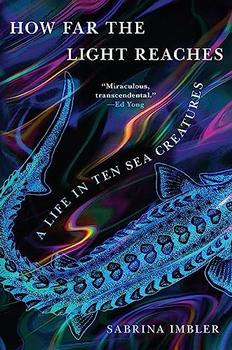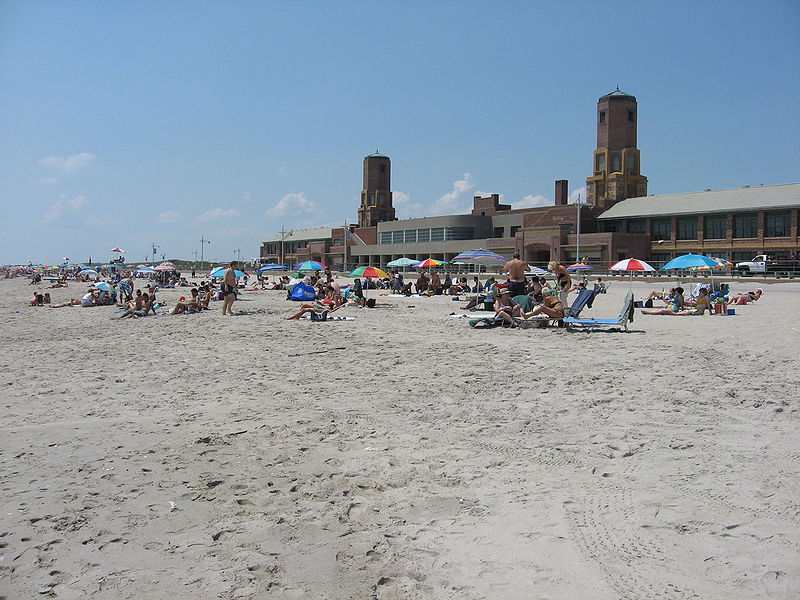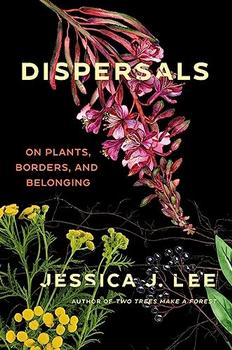Summary | Excerpt | Reviews | Beyond the book | Read-Alikes | Genres & Themes | Author Bio

A Life in Ten Sea Creatures
by Sabrina ImblerA queer, mixed race writer working in a largely white, male field, science and conservation journalist Sabrina Imbler has always been drawn to the mystery of life in the sea, and particularly to creatures living in hostile or remote environments.
Each essay in their debut collection profiles one such creature: the mother octopus who starves herself while watching over her eggs, the Chinese sturgeon whose migration route has been decimated by pollution and dams, the bizarre Bobbitt worm (named after Lorena), and other uncanny creatures lurking in the deep ocean, far below where the light reaches. Imbler discovers that some of the most radical models of family, community, and care can be found in the sea, from gelatinous chains that are both individual organisms and colonies of clones to deep-sea crabs that have no need for the sun, nourished instead by the chemicals and heat throbbing from the core of the Earth. Exploring themes of adaptation, survival, sexuality, and care, and weaving the wonders of marine biology with stories of their own family, relationships, and coming of age, How Far the Light Reaches is a book that invites us to envision wilder, grander, and more abundant possibilities for the way we live.
In "My Mother and the Starving Octopus," Imbler explores the pitfalls of motherhood and womanhood through the lens of an octopus that brooded over her eggs for an astonishing four-and-a-half years, not leaving them even for a moment to seek nourishment. An essay called "We Swarm" is an ode to queer locations and events in New York City, including the annual Pride parade and accompanying Dyke March ("which any of us will remind you is a protest, not a parade"), as well as a stretch of Jacob Riis Beach in Queens that is a popular party spot and hallowed part of LGBTQ+ history. In one of the strongest pieces, "Hybrids," Imbler addresses the theme of community again, interrogating language to consider how white supremacy invades and infects self-expression for people of color. They conclude astutely that "Maybe complaining to someone who gets it is one of the purest comforts on Earth."..continued
Full Review
(787 words)
This review is available to non-members for a limited time. For full access,
become a member today.
(Reviewed by Lisa Butts).
 In the essay "We Swarm" from their debut collection How Far the Light Reaches, Sabrina Imbler reflects on their experience finding comfort and kinship in New York City's queer community. The primary setting of this essay is a part of the beach at Jacob Riis Park in the borough of Queens, which, they explain, "had been a gay haven as early as the '40s, or even the '30s." By the 1950s and '60s, the area called "Bay 1" or "the People's Beach" was a popular meeting spot for a diverse group of LGBTQ+ New Yorkers and visitors. A 1963 article in the New York Times reported that Jacob Riis was somewhere "the New York homosexual" could find others of "his kind." In the 1970s, the beach became a hub of political activity for a community seeking ...
In the essay "We Swarm" from their debut collection How Far the Light Reaches, Sabrina Imbler reflects on their experience finding comfort and kinship in New York City's queer community. The primary setting of this essay is a part of the beach at Jacob Riis Park in the borough of Queens, which, they explain, "had been a gay haven as early as the '40s, or even the '30s." By the 1950s and '60s, the area called "Bay 1" or "the People's Beach" was a popular meeting spot for a diverse group of LGBTQ+ New Yorkers and visitors. A 1963 article in the New York Times reported that Jacob Riis was somewhere "the New York homosexual" could find others of "his kind." In the 1970s, the beach became a hub of political activity for a community seeking ...
This "beyond the book" feature is available to non-members for a limited time. Join today for full access.

If you liked How Far the Light Reaches, try these:

by Jessica J. Lee
Published 2025
A prize-winning memoirist and nature writer turns to the lives of plants entangled in our human world to explore belonging, displacement, identity, and the truths of our shared future

by Chloe Dalton
Published 2025
A moving and fascinating meditation on freedom, trust, loss, and our relationship with the natural world, explored through the story of one woman's unlikely friendship with a wild hare.
The single biggest problem in communication is the illusion that it has taken place
Click Here to find out who said this, as well as discovering other famous literary quotes!